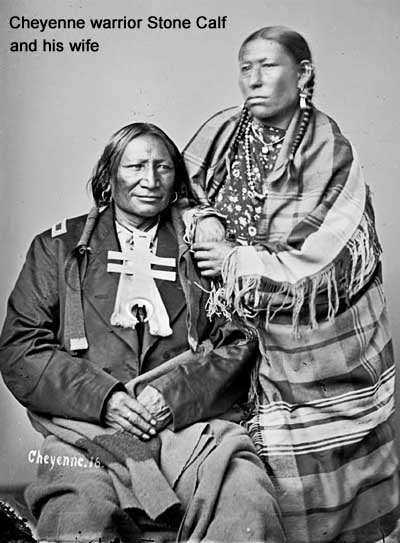|
||||||||||
Bruce Brown's 100 Voices... Soldier Wolf's Story of the Battle
THE SOLDIER WOLF INTERVIEW
I was then seventeen years old, [and] old enough to notice a great many things and to see the reasons for it. The Cheyennes had been there [on the Little Bighorn] only for one night. Next morning, somewhere about noon, the troops charged down Reno Creek into the upper Sioux village, and drove all the people out and set fire to the lodges. When the people in the lower village heard the shooting up above, they all rushed toward it. Everybody went. [Reno's] troops retreated and the Indians all rushed in among them. They were all mixed up. The soldiers seemed to be drunk (or panic stricken); they could not shoot at all. The soldiers retreated to the timber and fought behind cover. If they had remained in the timber, the Indians could not have killed them. But all at once -- perhaps they got frightened they rushed out and started to cross the creek. Then it was that the Indians rushed in among them. They crossed the river and went up the high bluff. When the soldiers got on the ridge, the Indians left them. When the Indians rushed to meet Reno, all the women and children gathered down at the lower village, and becoming more and more frightened as they listened to the firing, they decided to cross the river to the east side and so to get farther away from the fight. When these women were crossing the river and some were going up the hills, they discovered more troops coming. This was Custer's party. The women ran back and someone rode to where the men were fighting Reno and told them that more soldiers were coming below. Then all the men rushed down the creek again to where the women were. [Note: here is Medal of Honor winner Peter Thompson's description of Custer in the midst of some kinky business with a tethered squaw near the river.] By this time, Custer had gotten down to the mouth of the dry creek and was on the level flat of the bottom. [Note: White Cow Bull said he shot a buckskin-clad officer on a sorrel horse with four white socks -- which could only be Custer -- when Custer's command tried to ford the river. See Who Killed Custer: The Eye-Witness Answer for more info.] They began firing and for quite a time fought in the bottom, neither party giving back. There they killed quite a good many horses, and the ground was covered with the horses of the Cheyennes, the Sioux and the white men, and two soldiers were killed and left there. But soon the Indians overpowered the soldiers and they began to give way, retreating slowly, face to the front. They fell back up the hill until they had come nearly to where the monument now is. Then they turned and rushed over the top of the hill. From this point on, everything was mixed up, for there was a grand charge and nothing clear could be seen for the dust and the people, until all the troops had been killed. Then they ran off the government horses left alive, eighty or ninety head, down into the creek. After I had gone down with the horses and the fighting was over, the dust cleared away and I looked toward the hill -- where the monument is -- and saw many Indians still there. I went back to see what they were doing. As I went back, I found lying along the hill, north of the monument, a number of dead soldiers. When I got on the hill, I found that all the soldiers had been killed. In the fight, only six Cheyennes were killed; some were wounded but not very many. More Sioux were killed and wounded. Reno's men were frightened and acted as if they were drunk -- as I think they were. Custer's men fought well and bravely. Cheyenne Memories of the Custer Fight: A Source Book by Richard G. Hardorff, The Arthur Clark Co. Spokane, WA 1995, p 41 - 44
|
||||||||||




 Northern Cheyenne Indian Reservation, Montana, 1898
Northern Cheyenne Indian Reservation, Montana, 1898







